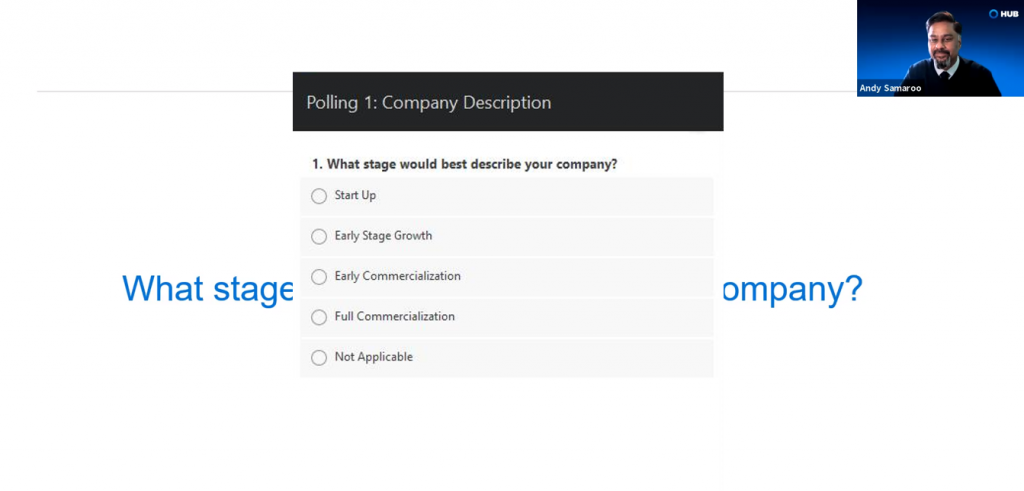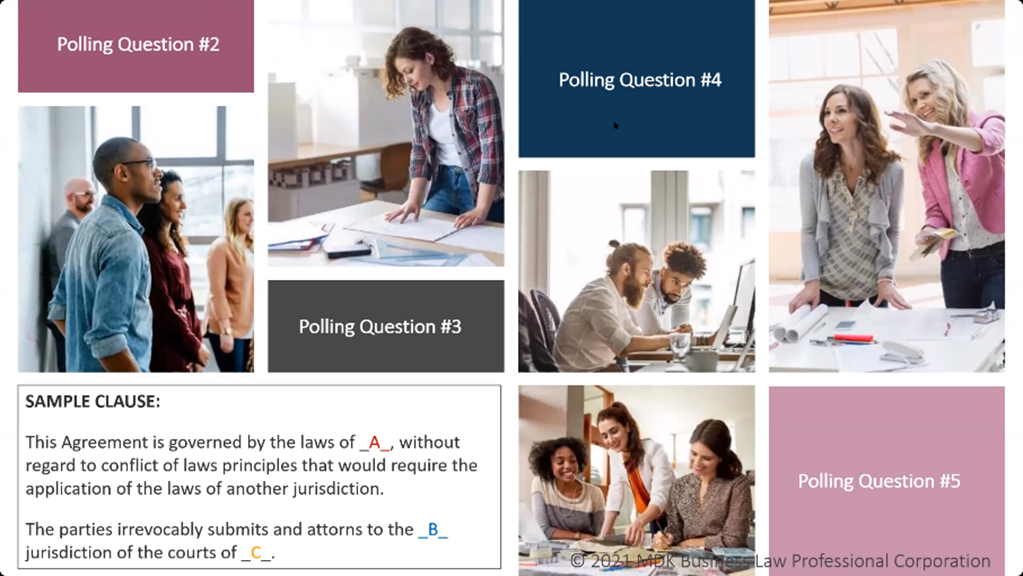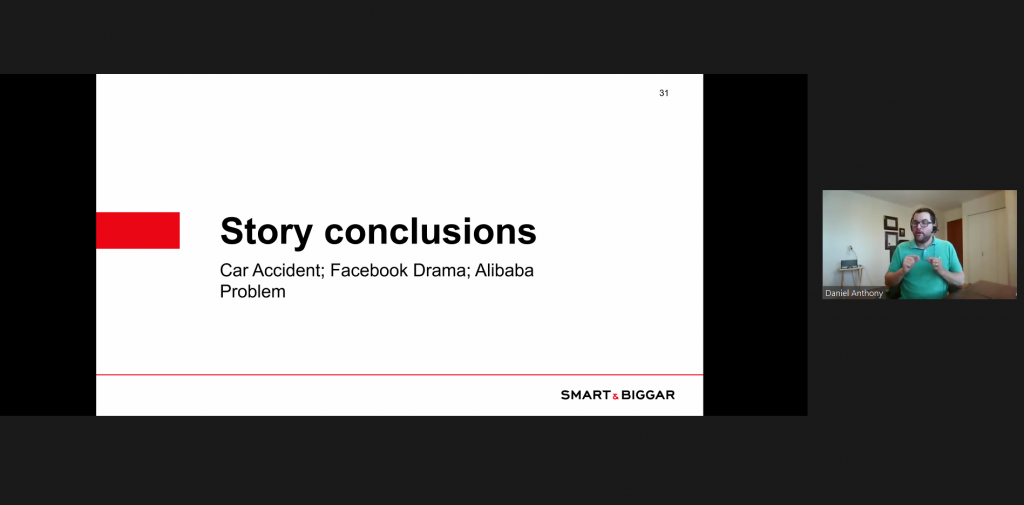Top 3 Tips for an Impactful Virtual Workshop
10 -12 mins | 1520 words
By: Matt McGarrity
During a year which saw many of us transition to virtual work environments, we’ve gained the opportunity to re-evaluate many commonly held workshop practices that may have otherwise gone untouched. In the drastically different atmosphere of hosting webinars and workshops online, it is vital that organizations employ different strategies to engage and excite their audience. Being able to drop out of a workshop at any time, or attend from behind a black screen, has fundamentally changed the opportunities for interaction that workshop hosts have enjoyed with their participants in the past. Never has it been more important to develop ways to actively engage with attendees and more importantly; hold their attention.
At Invest Ottawa, we provide entrepreneurs with access to essential business advice and actionable guidance from industry experts in the community. We partner with technology and innovation leaders from the Ottawa area, bringing world class expertise to the companies we work with. Our partners host a variety of educational workshops that address the fundamentals in areas like accounting, law, and insurance, key business concepts for new and scaling entrepreneurs and businesses. Previously hosted onsite at Cours Bayview Yards, since 2020 due to the pandemic, our workshops have been moved online. During 2020, Invest Ottawa hosted 30 free virtual workshops in conjunction with our partners, which welcomed over 1,200 participants.
Having hosted so many virtual workshops in our new virtual world, Invest Ottawa has learned that the way a virtual workshop operates should greatly differ from that of larger virtual events.
Virtual events, such as conferences and keynotes:
- tend to be much larger in scale and much longer in duration,
- accommodate hundreds or even thousands of participants, and
- have the goal of providing broad knowledge to a large group of people.
Virtual workshops on the other hand tend to be much more intimate and:
- welcome between 20-50 attendees,
- focus on giving actionable advice and direction to a smaller group of attendees, and
- take advantage of a smaller setting.
Here are our top three tips to ensure you have an impactful virtual workshop.
Keep Your Workshop as Interactive as Possible
One of the primary goals in any workshop is to provide value to your audience by addressing their concerns and questions and ensuring they have all the information they need to leave the event with actionable guidance. Pre COVID-19, addressing questions or polling the room was an easy way to do this. This valuable method to interact with your audience shouldn’t be thrown to the wayside just because the presenter and the participants are not in the same room.
One viable substitute to hand raising during an in-person workshop, is to enable a polling system in your virtual workshop. Many platforms, such as Zoom and Hopin, have polling features. Using these features before or during a virtual workshop can help guide the context a presenter provides when explaining new information. The more relevant and personalized the information is to your audience, the more likely they will hang on to every word you say.
Enabling chat functions and allowing set time for questions after each section, is another practice that can increase interaction in a similar way to polling. We recommend that each of our presenters split their presentation into 15-minute sections, allowing for questions after each section. Rapt attention is hard to come by on a virtual workshop and breaking down information into bite-sized pieces allows for better retention and more relevant questions per session. Given that participants only view 46 minutes of a 60-minute webcast on average, these frequent check-ins with the audience are crucial to keeping everyone on track.
Our partner Hub International made great use of these tactics in their workshop: Insurance 101 for Emerging Businesses. Time was allowed, at multiple break points in this workshop, for questions to be asked and answered in real time through use of the chat function in Zoom. Hub also made use of Zoom’s polling feature in order to determine what stage participants’ companies are in and tailor their explanations accordingly.
Making space in your virtual workshops for polling and questions is fundamental to creating an enticing experience for your audience. A virtual workshop that feels more like an open discussion, rather than a lecture, is much more likely to resonate with people. Successfully walking the line between getting your message across, while also addressing concerns from the audience is crucial to a great virtual workshop.
Be Concise – Workshops should be 1 hour or less
In this current world of virtual work, many of us spend large portions of our day in video calls. This “zoom fatigue” directly contributes to decreased attendance and active listening during virtual workshops. This is especially important to consider if your workshop is scheduled in the afternoon or later in the day, as your audience has likely been in front of a monitor for many hours already.
When hosting virtual workshops, it is vital that you be as concise as possible, while still covering all your necessary points. We find that our most well-received workshops tend to be 1-hour in length. This is enough time to provide valuable insights and answer questions, while still being short enough to have lots of active participants on the other end.
If you find your workshop exceeding the 1-hour mark significantly, it’s worth evaluating whether your workshop should be delivered as a series. Given that 44% of attendees prefer webinars around 45 minutes long, creating a series of related workshops could lead to increased concentration and engagement with your material.
Consider using an agenda like the following to help structure a concise workshop that is both interactive and engaging:
|
0 to 5-minute mark |
Introduction and setting the stage, interactive element |
| 5 to 15-minute mark | First topic |
| 15 to 20-minute mark | Time for preliminary questions (helping set the stage for examples more applicable to the audience further in the workshop) |
| 20 to 35-minute mark | Second topic |
| 35 to 40-minute mark | Time for continued questions to ensure your audience is fully understanding the concepts you are presenting |
| 40 to 55-minute mark | Final topic and maybe an opportunity for an additional interactive element such as a quiz or poll |
| 55 to 60-minute mark |
Period for closing questions, ensuring that your audience takes home the intended message |
Although your workshop’s structure may vary given your unique content and presentation style, creating a rough structure will allow you to better budget your time and make space for both information and interaction.
Be creative when engaging your audience
When it comes to keeping an audience engaged, trying new things is the gold standard for finding future success. The current pandemic has already forced us to develop new ways to do so many day-to-day tasks that were previously second nature. Use this period of extreme change as an opportunity to experiment with new ways to captivate your audience. Implementing creative ways to engage your audience such as quizzes, stories, or games can provide a unique experience to one’s day.
Our partner MDK Business Law used this strategy through creating a mini quiz at the end of their workshop: Breaking Down the Most Negotiated Clauses in Commercial Contracts. In this workshop, MDK used the polling feature available in Zoom to quiz participants on some of the main concepts covered during the workshop. Using this feature, MDK was able to reinforce some of the key teachings and ideas from their workshop in a fun way, based off their participants’ understanding.
Another creative technique was used by our partner Smart & Biggar, during their workshop: IP Strategy From Bricks to Clicks: Protecting TMs and Copyright Online. This virtual workshop made use of storytelling, helping to tie in key concepts with real-world examples. Smart & Biggar looked at three different examples, each of which focused on a unique IP problem and how it was addressed. Connecting real-world stories to your ideas can help your audience better understand how your concepts can be applied practically and may be able to serve as a reference point for an issue an audience member already has. The more realistic and applicable you can make your concepts through stories, the more captivated your audience is likely to be.
Unique moments like these will help set your virtual workshop apart from the many other virtual meetings and video calls in a person’s day. It also allows your audience to retain key information from your workshop by being able to tie the knowledge in with a distinct experience.
As with most practices in the pandemic, there is no one-shoe-fits-all for a successful virtual workshop. Many factors such as audience, relevance, and timeliness all play a role in a workshop’s success. However, if you can keep your virtual workshop interactive, concise, and creative it will start you off on the best foot towards captivating and engaging your audience.
About the author
Matt McGarrity is a member of the Partnerships Engagement team at Invest Ottawa. He assists the partnerships team in building and maintaining partner relationships, meeting partnership objectives, and coordinating partner workshop ideas and information.
Matt is currently enrolled in the Bachelor of Commerce program at Carleton University. With a concentration in marketing, Matt is passionate about entrepreneurship, market research, and creating written content.









